Blog Bite 3: Geotube® Systems Come of Age for Mining and Mineral Process Waste Dewatering
By John Smith

Welcome to our blog space where we share our insights and experiences in civil engineering and geosynthetics. We feature bite-sized articles for quick and easy consumption.
Over recent years there has been a noticeable increase in the use of TenCate Geotube® systems in dewatering mineral waste or being part of mine water and waste stream management practice.
So, what is driving this increased acceptance and how successful are Geotube® systems in dewatering complex slurries? We explore 4 key reasons in 4 bite-sized pieces.
Let’s take our third bite where we acknowledge that cost is often a concern – so how does TenCate Geotube® dewatering systems compare against convention mechanical plant?
#3. COST EFFECTIVENESS
When assessing the viability of different dewatering options, mining companies and their consultants typically compare costs on the basis of dollar per m³ retained solids. It’s an analysis that is brutally efficient and straightforward. It requires geotextile tube system suppliers to understand the whole process in detail and assess individual process implications and component cost. Given no two projects are the same, and that there is no one-size-fits-all solution, this requires every project to be assessed as a separate case.
Geotube® System vs. Conventional Mechanical Plant
Mechanical plant comes at a high capital cost with a defined output and operating cost which is easily converted into dollar/m³ dry-solids numbers.
TenCate Geotube® units are by comparison very low cost but require certain manpower skills to deploy and operate efficiently. They are not a “set-and-forget” solution – rather, they are an operation that requires a degree of oversight.
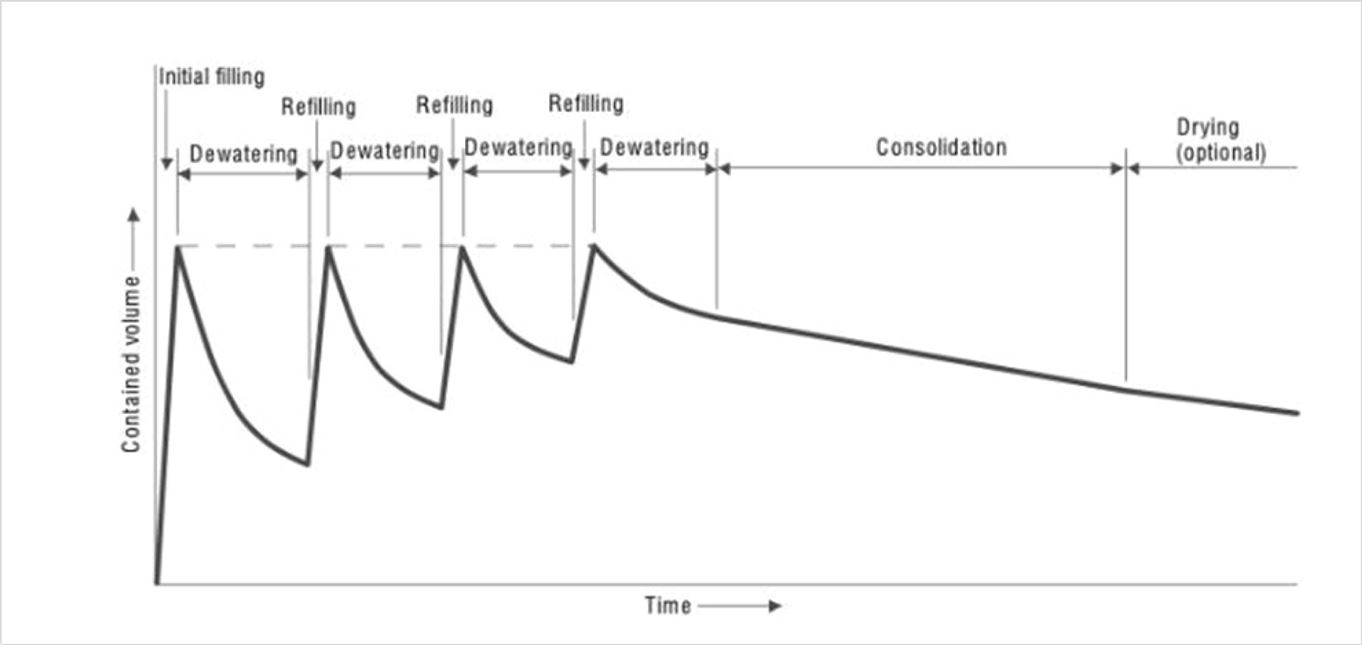
Filling and draw down cycles and consolidation stage when using geotextile tubes.
Source: Geotextile Tube Dewatering Fundamentals (After Lawson 2008)
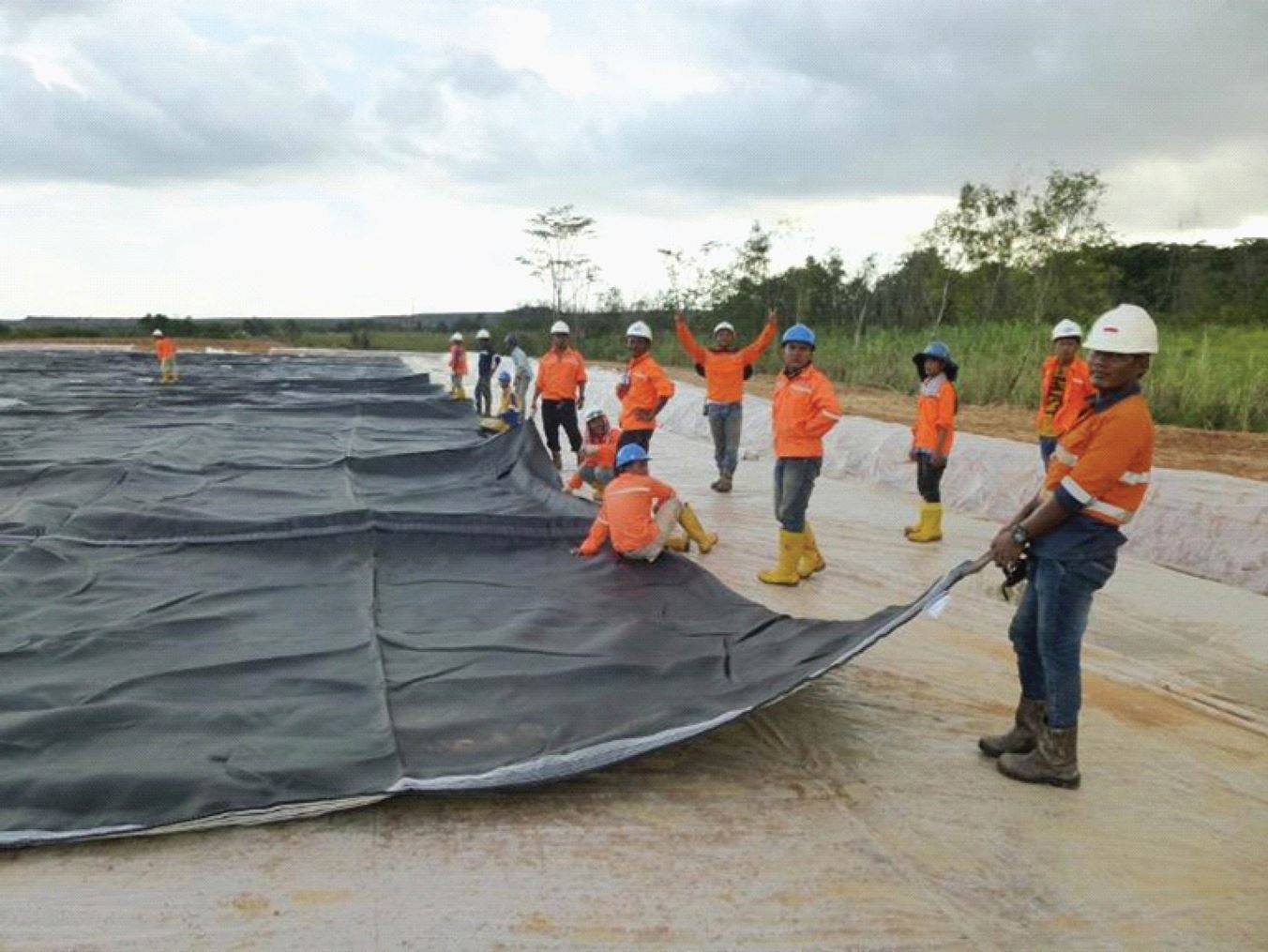
Rolling out the Geotube® units
Comparison of Specifications
Another assessment that can be confusing is comparing the cost and performance of geotextile tubes from different suppliers.
Technical data sheets typically provide information on the fabrics used (eg strength), but not how they dewater different types of slurries. This can only be determined by requesting a detailed project specific Geotube® unit design that considers the slurry type, daily pump rate, polymer dosing and other related inputs.
Geotube® volume is not simply a calculation of the geotextile tube circumference and length. It is determined by the maximum inflated height that can be generated relative to the final in-tube wet density or bulk density of the slurry being dewatered.
Industry Standard and Performance
In this respect, it is accepted that TenCate Geotube® units are the industry standard because of their ability to generate greater dry cake volume capacity for a broader range of slurry types than competitor alternatives. This higher retention volume more positively influences project costs than geotextile tubes with lower capacity. The difference is easily assessed by comparing geotextile tube performance on the basis of dollar per m³ dry cake capacity per meter of tube.
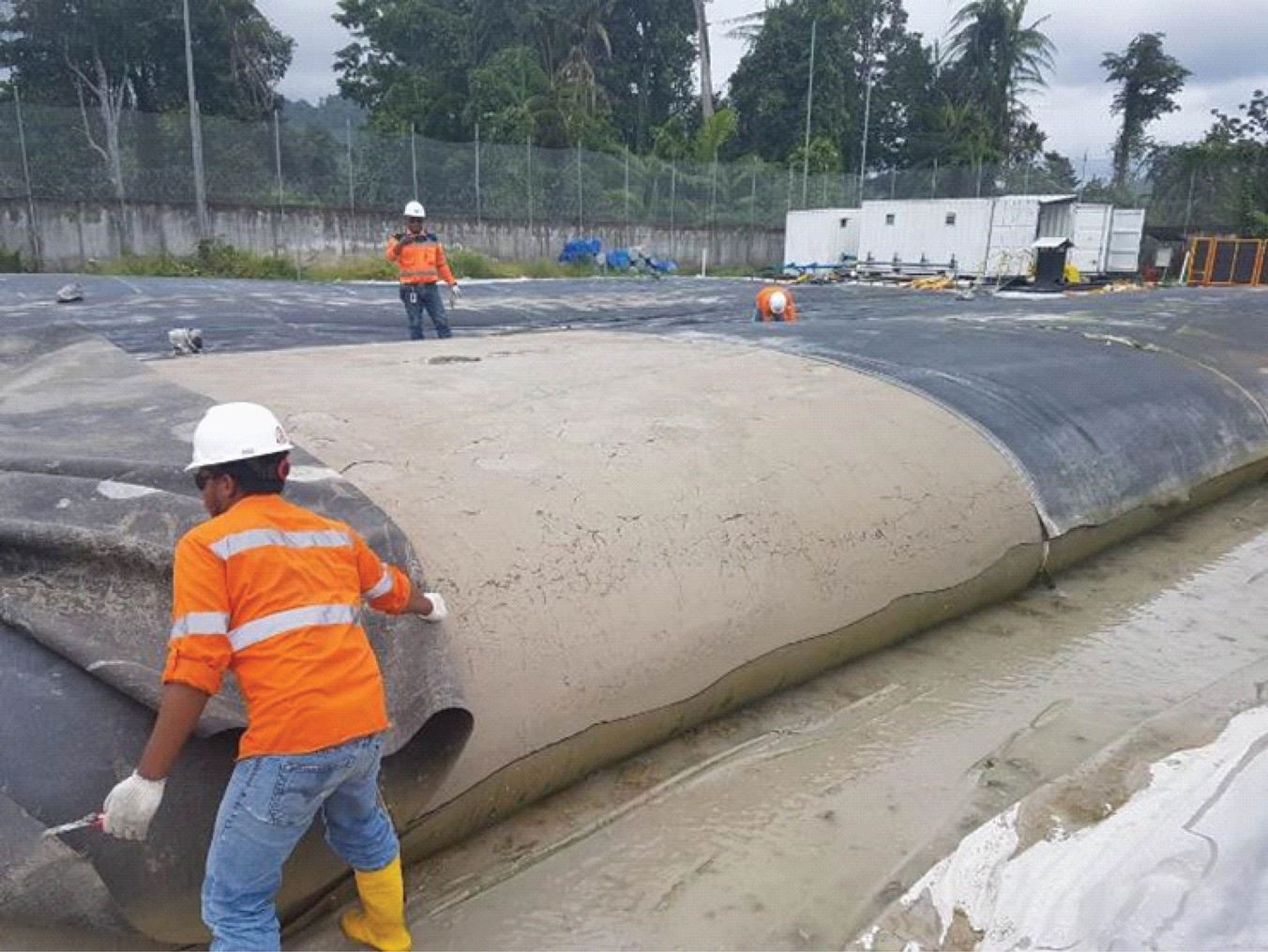
Opening the Geotube® units following dewatering
Polymer Dosing
Aside from the cost of the geotextile tubes and the manpower required to deploy and operate them, the polymer dosing is a cost that also must be carefully analyzed. Depending on the nature of the slurry, flocculants or coagulants are often required to assist collect and settle particles in suspension and improve effluent discharge quality and accelerate discharge flow.
In instances where polymer dosing is required, a TenCate Geotube® system being a static dewatering process, generally requires polymer dosing between 1 to 3 kg per metric tons dried solids (MTDS)
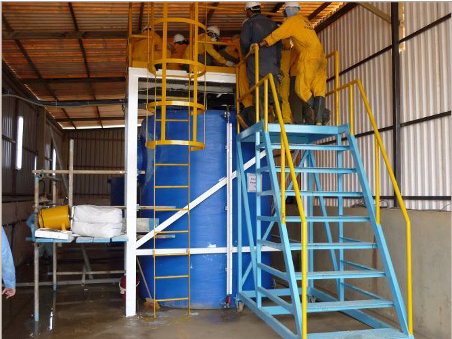
Polymer preparation tank
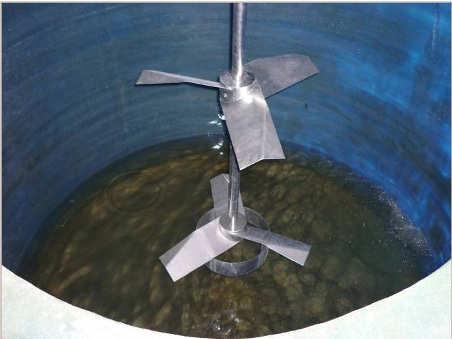
Polymer agitation
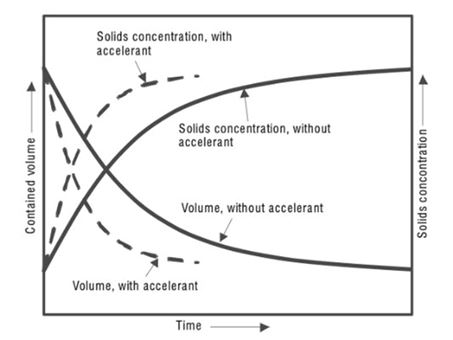
Polymer agitation
Source: Effect of Chemical Dewatering Accelerants (After Lawson 2008)
On a Separate Note : What About Ore Price Neutrality?
Looking back over the past three to five years, an important driver in the increased use of Geotube® dewatering units in mineral slurry dewatering has been the capability of these materials to deliver solutions irrespective of whether ore prices are at the top or bottom of price cycles.
When demand on plant and equipment is high, TenCate Geotube® systems have been able to supplement plant output especially during maintenance shutdowns. Conversely when ore prices and margins are low, tube dewatering systems have been applied as low CAPEX alternatives to mechanical plants.
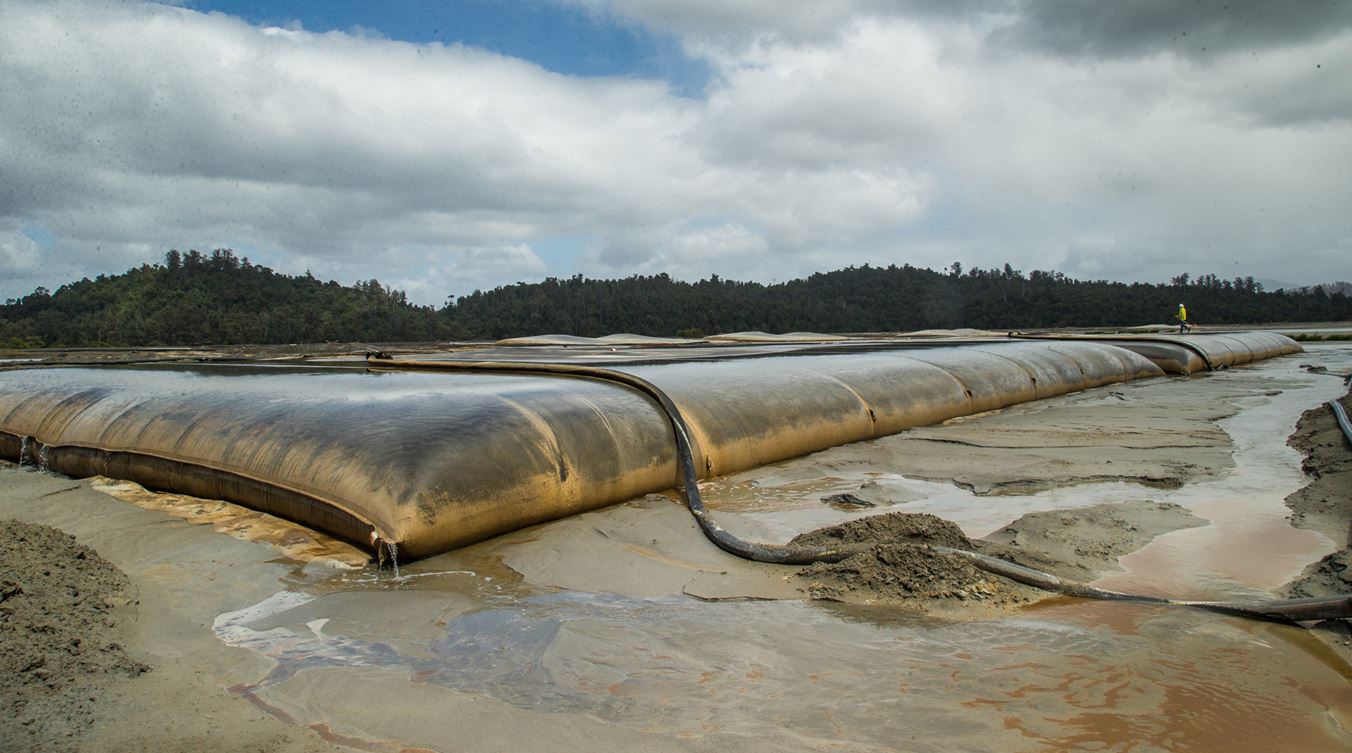
Geotube® dewatering systems are highly efficient and cost effective with the ability to generate significant dry cake volume capacity



